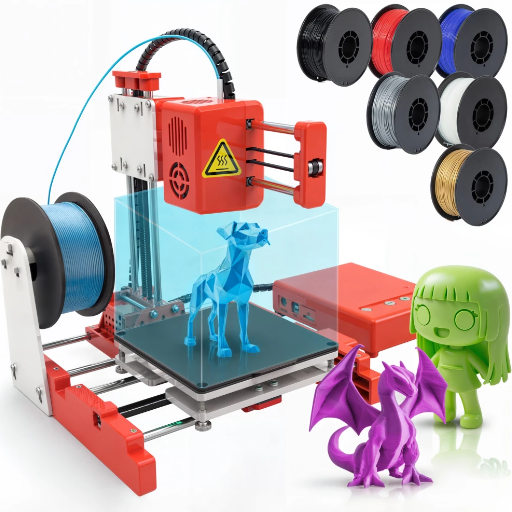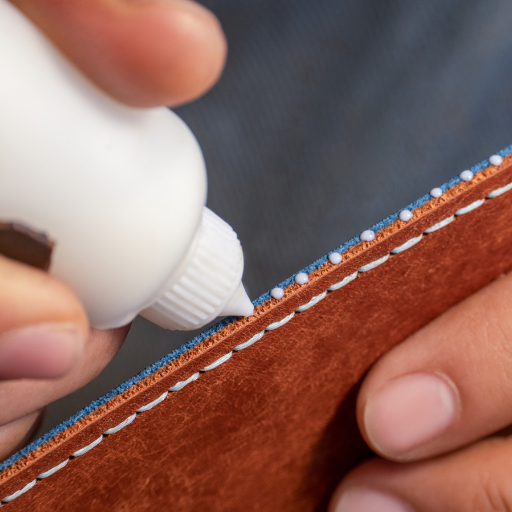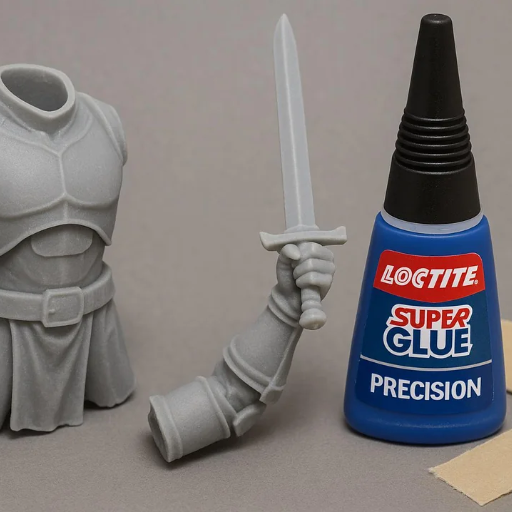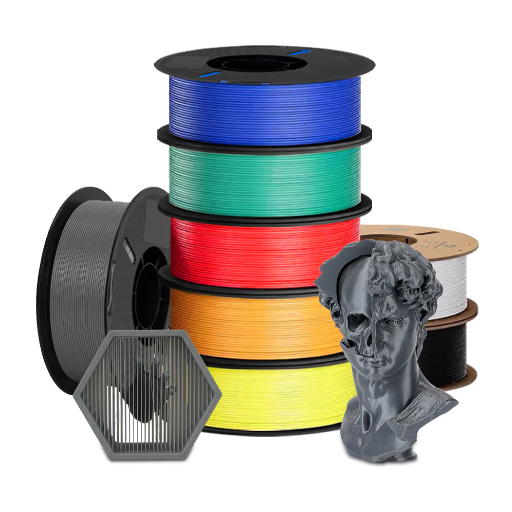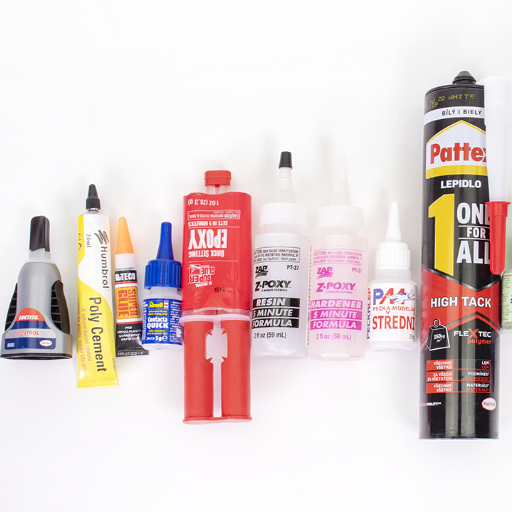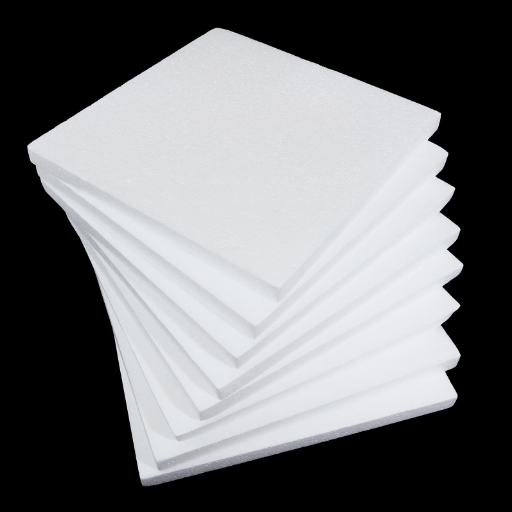Leather is a timeless and durable material, but when it comes to repairing or crafting with it, finding the right adhesive can be a challenge. With so many options on the market, it’s crucial to select a glue that not only provides a strong, lasting bond but also works seamlessly with leather’s unique texture and flexibility. Whether you’re mending a favorite leather jacket, fixing upholstery, or embarking on a creative leatherworking project, having the right adhesive makes all the difference.
This guide will walk you through the top leather glues available, detailing their strengths, best use cases, and application tips. From specialized leather-specific adhesives to versatile options that work across materials, we’ve got you covered. By the end of this article, you’ll have all the information you need to choose the perfect solution for your leather repair or craft needs.
What are the top glues for bonding leather effectively?

Barge All-Purpose Cement
Renowned for its industrial strength, Barge All-Purpose Cement is ideal for heavy-duty leather projects. It offers a strong, flexible bond, making it perfect for footwear, belts, and bags.
Tear Mender Instant Adhesive
This non-toxic adhesive dries quickly and creates a durable, waterproof bond. It’s excellent for quick repairs and is safe to use on a variety of leather items.
Loctite Ultra Gel Control Super Glue
A versatile option, Loctite Ultra Gel Control provides a tough, precise bond. It works well for small leather fixes and mixed-material projects.
Fiebing’s Leathercraft Cement
Specifically designed for leather, this water-based adhesive offers a strong, non-toxic bond. It’s popular among crafters for its ease of use and clean finish.
Aleene’s Leather & Suede Glue
Best suited for lightweight leather and suede, Aleene’s glue excels in projects where flexibility and a secure bond are crucial. It’s also highly effective for decorative work.
Choosing the right leather glue depends on your project requirements, such as strength, drying time, and material compatibility.(Recommended: Loctite Glue)
Comparing contact cement vs. super glue for leather projects
When comparing contact cement and super glue for leather projects, it’s essential to consider their key features and use cases. Contact cement is a highly durable adhesive that creates a strong, flexible bond ideal for leatherworking. It works exceptionally well on larger surfaces, as it evenly coats the material and adheres once both sides have dried and pressed together. This makes it a prime choice for items like shoes, bags, or upholstery where long-lasting strength and flexibility are necessary.
On the other hand, super glue is known for its quick-drying properties and precision. It’s best suited for smaller repairs, decorative attachments, and projects requiring an immediate, rigid bond. However, super glue lacks flexibility, which can result in cracks or brittle seams when used on leather items that undergo movement or flexing.
Ultimately, contact cement is the better option for projects requiring durability and flexibility, while super glue serves as an excellent solution for quick fixes or detailed work.
Exploring specialized leather adhesives: Barge, Fiebings, and Eco-Flo
Barge Cement
Barge Cement is a widely recognized adhesive in leatherworking, known for its exceptional strength and versatility. It is primarily used for bonding leather to leather, as well as to other materials like rubber, wood, and fabric. Barge Cement offers long-lasting bonds that can withstand heavy use and extreme conditions, making it ideal for creating durable leather items such as shoes, belts, and bags. Additionally, it remains flexible after curing, ensuring it adapts to the natural movement of leather.
Fiebing’s Leathercraft Cement
Fiebing’s Leathercraft Cement is a non-toxic, water-based adhesive tailored specifically for leatherwork. It is easy to apply, dries clear, and offers a strong yet flexible bond. This adhesive is particularly well-suited for beginners and hobbyists, as it is safe to use and cleans up easily with water. While it may not provide the same industrial durability as Barge Cement, it is excellent for lighter projects like wallets, decorative leather pieces, and patchwork.
Eco-Flo Leather Weld
Eco-Flo Leather Weld is another water-based adhesive, designed with eco-conscious crafters in mind. It provides strong adhesion while being environmentally friendly and safe to handle. This adhesive works well for lightweight leather projects that don’t involve significant wear and tear. It is appreciated for its quick drying time and low odor, making it a popular choice among those working in shared or indoor spaces. Additionally, like Fiebing’s, it can be cleaned up easily with water and offers a flexible bond suitable for smaller, detailed projects.
The pros and cons of using rubber cement on leather
A favorite for adhesives on leather projects is rubber cement because of its versatility and flexibility. The following explains its primary advantages and disadvantages:
Pros
Ease of Application: Rubber cement can be applied with brushes or applicators which makes it useful for detailed projects.
Flexibility: The cured rubber cement maintains its flexile quality and does not restrict the movement of the bonded leather. This prevents cracking.
Temporary or permanent bonds: Rubber cement is adjustable to different needs, creating strong bonds when required and easily peeled off without damaging the surface.
Low odor and quick drying time: It is suitable for use indoors or shared spaces due to its gentle smell and fast drying time.
Cons
Limited Strength: Precision work that involves a lot of movement and pressure is not ideal for rubber cement as it has weaker adhesive bonds than contact cement.
Susceptibility to heat and moisture: High temperatures or humidity may weaken the bond, compromising it under certain conditions.
Concerns for toxicity: Many rubber cements advertised as non-toxic still pose a risk due to harmful chemicals, so they should still be used in well-ventilated areas.
For light duty or decorative projects, flexibility is prioritized which is why rubber cement is the preferred adhesive choice. Removing the bond also comes without complications. Problems arise when trying to adapt the application to withstand extreme stress or other severe conditions, causing areas needing durability to be unsustainable.
How do I choose the right glue for different types of leather?

When choosing the right glue for different types of leather, consider the following factors:
Type of leather: For soft or flexible leathers, use flexible adhesives like leathercraft glue or contact cement for strong, pliable bonds. For heavier, stiff leathers, stronger adhesives such as epoxy or polyurethane glue may be better suited.
Project purpose: Determine whether the project requires a permanent or temporary bond. Rubber cement is ideal for temporary bonds, while contact cement or leather-specific adhesives are better for lasting results.
Stress and durability needs: For items exposed to high stress or frequent use, opt for high-strength adhesives like polyurethane or epoxies that can withstand wear and tear over time.
Environmental conditions: Consider heat, moisture, and flexibility requirements, as certain adhesives may fail under extreme conditions or prolonged exposure to humidity.
Safety and application: Use non-toxic and easy-to-apply adhesives if working in an enclosed space or on intricate detailing.
Carefully reviewing the specific needs of your project will help you match the most appropriate glue to the type of leather and intended use.
Best adhesives for smooth leather vs. suede
When choosing adhesives for smooth leather, opt for products specifically designed to bond non-porous surfaces. Contact cement, such as Barge All-Purpose Cement, is highly effective as it creates a strong, flexible bond suitable for projects requiring durability. Alternatively, cyanoacrylate works well for smaller repairs, offering quick bonding for smooth leather.
For suede, which is more porous and delicate, using a flexible, non-stiffening adhesive is essential. Leathercraft cement or specialized fabric glues like Aleene’s Leather & Suede Glue are ideal for maintaining suede’s texture and preventing visible stiffening on the surface. Both options ensure the adhesive penetrates the material while preserving its soft finish.
Selecting glue for thin leather pieces vs. thick leather goods
When selecting glue for thin leather pieces, it’s essential to choose an adhesive that offers precision and minimal bulk. Options like contact cement or specialized leather glue work best because they provide a strong yet flexible bond without saturating or stiffening the material. For thicker leather goods, a heavy-duty adhesive such as polyurethane glue or strong contact cement is ideal, as it can handle the weight and heft of the material while creating a durable and permanent bond. Regardless of thickness, ensure the glue allows for some flexibility to prevent cracking over time. Always prioritize adhesives designed specifically for leather to ensure the integrity of your project.
Considerations for bonding leather to other materials
Selecting the appropriate adhesive involves taking into account the properties of both surfaces when attaching leather to other materials. For porous surfaces such as fabrics or wood, utilizing flexible and quick-drying adhesives like leather-specific contact cement or polyurethane adhesive works best, as they allow for slight movement while maintaining strong adhesion. For non-porous surfaces such as wood and metals, stronger bonds are achieved using epoxy adhesives and other industrial glues. The surface treatment is essential: both surfaces need to be cleaned thoroughly, then roughed up to improve bond strength. Finally, check the bonds on concealed parts of the leather to prevent any potential damage before applying the glue.
What techniques ensure a strong bond when gluing leather?

To ensure a strong bond when gluing leather, start by thoroughly cleaning the leather to remove any oils, dirt, or residues that could interfere with adhesion. Use a suitable leather adhesive, such as contact cement or specialized leather glue, for the best results. Apply the adhesive evenly to both surfaces and allow it to become tacky before pressing them together firmly. For added durability, clamp the pieces or apply consistent pressure while the adhesive cures. Finally, allow sufficient drying time as recommended by the adhesive manufacturer to achieve a permanent and secure bond.
Proper surface preparation for optimal adhesion
To ensure strong and reliable adhesion, proper surface preparation is critical. Begin by thoroughly cleaning both surfaces to remove dirt, oils, and debris. Use a lint-free cloth with isopropyl alcohol or a specialized cleaning solution suitable for your materials. Next, lightly sand the surfaces with fine-grit sandpaper to create a slightly textured finish, improving the adhesive’s grip. Ensure the surfaces are completely dry and free of any residue before applying the adhesive. Following these steps will help achieve a secure and long-lasting bond tailored to the specific materials and adhesive being used.
Applying pressure and clamping techniques for leather bonding
Proper application of pressure is critical for achieving a strong bond when working with leather. Once the adhesive is applied evenly to both surfaces, bring them together carefully, ensuring proper alignment. Use a roller or a flat tool to press the leather firmly, distributing pressure evenly across the area to eliminate air pockets and ensure maximum contact. For optimal results, employ clamping techniques suited for leather work. Position the leather between protective layers—such as wax paper or a silicone pad—to prevent marks, and use clamps or heavy flat weights to maintain consistent pressure. Allow the adhesive to cure as per the manufacturer’s instructions, as rushing this process can weaken the bond.
Drying and curing times: Ensuring a lasting hold
Drying and curing times are crucial to achieving a long-lasting bond in leather projects. Most adhesives for leather require an initial drying time of 15-30 minutes to allow the glue to set before handling. However, complete curing, where the bond reaches its full strength, typically takes 24-48 hours, depending on the specific adhesive, temperature, and humidity levels. For optimal results, always store the bonded materials in a dry, well-ventilated area during curing and avoid any stress or movement on the joint.
Can I use regular craft glue or white glue on leather projects?

Regular craft glue or white glue is not ideal for leather projects because it lacks the strength and flexibility needed for durable bonding. Leather is a material that experiences movement and tension, so using a specialized leather adhesive, such as contact cement or specially formulated leather glue, is highly recommended for reliable, long-lasting results.
Limitations of non-specialized adhesives on leather
Non-specialized adhesives, such as regular craft glue or white glue, are not designed to handle the unique properties of leather. These adhesives often fail to create a strong and flexible bond, leading to peeling or cracking over time due to the natural movement and strain leather undergoes. Additionally, they may not adhere properly to the textured surface of leather, resulting in a bond that is weak and unreliable. Non-specialized adhesives also tend to lack water and heat resistance, which are critical for leather projects exposed to varying conditions. For these reasons, specialized leather adhesives provide a superior and more durable solution.
Alternatives to craft glue for leather crafting
Compared to ordinary craft glue, leather adhesives perform better and last longer when working with leather. Here are some of the best alternatives:
Contact Cement
Because of its awesome bonding strength, contact cement is a favorite among leather crafters. It is also resistant to movement or strain. After applying the cement on both surfaces, it has to “set” till tacky before the pieces can be an pressed together. This creates a bond that is permanent, heat and moisture resistant, and ideal for heavy-duty leatherwork like belts and bags.
Rubber Cement
Rubber cement is great for temporary bonds and adjustable claims. It’s ideal for items that need stitching and adjustment before the final stitch, as it allows repositioning while not damaging the leather. However, drawbacks include being less durable for permanent fixes, lightweight items are best suited for rubber cement.
Epoxy Adhesives
Two-part epoxy adhesives work wonders for projects needing additional durability. They are especially efficient in bonding leather and other non-porous materials like metal or plastic, providing an extremely great bond. While it lacks the flexibility of other types of adhesives, its reliability under harsh conditions makes it a good alternative.
All of the aforementioned adhesives provide unique benefits, so your selection will vary based on the needs of your specific leather crafting project. As a best practice, check the compatibility of all adhesives with leather by attempting it on a scrap piece first.
What are the best glues for repairing leather items?

Contact Cement: This type of glue works great for heavy-duty work since it provides an amazing bond and is great for large surfaces of leather.
Leather Glue: It is easy to use, flexible, and works perfectly with soft or wearable items.
Super Glue: For smaller repairs, this glue works well. It dries fast and holds great, although it is not very flexible.
Epoxy Resin: This provides strong and long-lasting bonds, most useful for attaching rigid materials like metal or plastic to leather.
Each repair requires one of these types of glue, and they differ from each other. Careful testing ensures the intended outcome.
Fixing torn seams and edges on leather goods
Leather repairs always require proper tools to achieve a seamless finish, especially for torn seams. Start by taking off leftover threads using a seam ripper. Stitches need to be replaced using thick leather-specific waxed threads and needles with a saddle stitch for strength.
Edge bevelers can make rough edges less rough. Cleaning fades and applying edge paint are steps taken to take restoring. Burnishing with a slicker achieves polished edges and prevents breakage.
As long as cleaning the leather is maintained, regular conditioning helps prolong the life of the leather and avoid damage.
Adhesive solutions for patching holes in leather jackets
Careful selection of an adhesive is required when repairing a leather jacket to avoid making a permanent blemish and to enable easy movement after the repair. Wash the area surrounding the hole with a soft cloth and leather detergent, which will remove grime and oils that it may have picked up over time.
They are easy to work with and therefore ideal for small holes and tears: flexible contact cement and specialized leather glue. These types of glue are guaranteed to remain intact and maintain movement without causing cracks in the leather. Even for larger gaps, there are still leather patches available that could add extra support for the area.
Repairing gaps using this technique begins with cutting a leather patch slightly bigger than the hole and placing it directly over the hole. Adequate amounts of glue should be placed on each side of the leather, a patch and the space surrounding the hole to enable proper joining. For best results, these steps should be waited out until the adhesive idle time is reached. Some adhesives can increase their strength by being clamped or pressed while the curing stage is occurring.
So long as proper steps are followed, the patches should secure themselves after the waiting period. If polish leather conditioner is used afterward, it would further refine the area by ensuring ease of movement.
Reattaching leather soles on shoes
Reattaching leather soles is a straightforward process when done correctly and can extend the life of your favorite shoes. Begin by cleaning the sole and the underside of the shoe to remove old glue, dirt, and debris. Sanding both surfaces lightly can also help create a better bond. Next, apply a high-quality contact adhesive or shoe-specific glue evenly to both surfaces. Allow the adhesive to become tacky, following the manufacturer’s recommended wait time, before carefully pressing the sole back onto the shoe.
Once aligned, apply firm pressure or use clamps to secure the sole in place while the glue cures. For optimal results, some adhesives recommend leaving the shoe clamped for several hours. After the sole is firmly attached, check for any gaps or areas requiring additional adhesive. Finish by conditioning and polishing the leather to restore its appearance and maintain its durability. This cost-effective repair ensures your shoes remain comfortable and functional.
Are there eco-friendly and non-toxic leather glue options available?

Of course, there are eco-friendly and non-toxic options for leather glue. These types of glue are typically water based or solvent-free, which promotes the health of both people and the ecosystem. Brands such as Titebond and EcoGlue offer products made with sustainable ingredients, providing an excellent alternative. To guarantee an eco-friendly option, seek labels that indicate low VOCs (volatile organic compounds) or non-toxic claims.
Water-based leather adhesives: Pros and cons
Pros:
Water-based leather adhesives can be viewed as eco-friendly alternatives to solvent-based glues. Their toxicity is significantly lower, as is the level of VOCs emitted. Being water-based makes application and clean-up a breeze, ensuring that users face minimal risk. Furthermore, there are no noxious fumes associated with these adhesives, and reliable bonding is achieved for most repair and crafting projects.
Cons:
Water-based options do not provide the same durability, moisture, or heat resistance as their solvent-based counterparts, which makes them unsuitable for outdoor or heavy-duty applications. Furthermore, with a shorter shelf life, these adhesives may not be able to be used right away as they may also require additional time to dry to an optimal state.
Exploring plant-based and biodegradable leather glues
Plant-based and biodegradable leather glues represent an innovative step toward sustainable crafting and repair. These adhesives are typically derived from renewable resources like starches, natural resins, or plant oils, minimizing environmental impact. They break down more easily in nature, reducing waste and pollution compared to traditional glues.
Advantages:
Plant-based leather glues are non-toxic, eco-friendly, and align with ethical practices, making them a preferred choice for environmentally conscious users. They provide sufficient bonding strength for light to moderate applications and avoid harmful byproducts, promoting cleaner production processes.
Limitations:
While sustainable, these adhesives can lack the robust strength and water resistance needed for heavy-duty projects. They might also have higher costs and less availability, especially when compared to conventional options. This makes them a better fit for specific applications rather than universal use in leatherworking.
References
Frequently Asked Questions (FAQ)
Q: What is the best glue for leather projects?
A: The best leather glue for most projects is usually a high-quality leather cement, such as Fiebing’s Leather Cement or Eco-Flo Leather Weld Adhesive. These products are specifically designed to hold leather together effectively.
Q: Can Gorilla Glue be used on leather?
A: While Gorilla Glue can be used on leather, it is not typically recommended for leather products because it can expand and harden, which may affect the leather’s flexibility and appearance. It’s better to use leather-specific adhesives.
Q: What types of leather glues are available?
A: There are several types of leather glues, including leather cement, contact cement, and rubber cement. Each has its own advantages, with leather cement being preferred for most leathercraft projects due to its strong bond and flexibility.
Q: How do I choose the right leather glue for my project?
A: Choosing the right leather glue depends on the type of leather you use and the nature of your project. For instance, leather cement is ideal for bonding two pieces of leather together, while contact cement is good for projects requiring a strong, immediate bond.
Q: What kind of glue can be used for leather shoes?
A: For leather shoes, the best glue to use is a strong, flexible adhesive like Barge Rubber Cement, which is well-suited for bonding leather and rubber materials commonly found in footwear.
Q: Is there a difference between leather glue and leather cement?
A: Yes, leather glue and leather cement differ. Leather cement is a type of adhesive specifically formulated for leather, offering a strong and flexible bond, while regular glue adhesives may not provide the same durability.
Q: How do I properly apply leather cement to ensure a strong bond?
A: To properly apply leather cement, clean both surfaces of the leather pieces together, apply a thin layer of cement to each surface, let it dry until tacky, then press the pieces of leather together firmly to hold the leather in place.
Q: Can I use leather cement on all types of leather?
A: Leather cement can be used on most types of leather, but it’s always a good idea to test it on a small area first, especially on delicate or tanned leather, to ensure it doesn’t affect the leather’s finish.
Q: What should I avoid when using glue on leather?
A: When using glue or adhesive on leather, avoid using excessive amounts, as it can seep through and stain the leather. Also, avoid using non-leather-specific glues that may not provide a lasting bond.
















